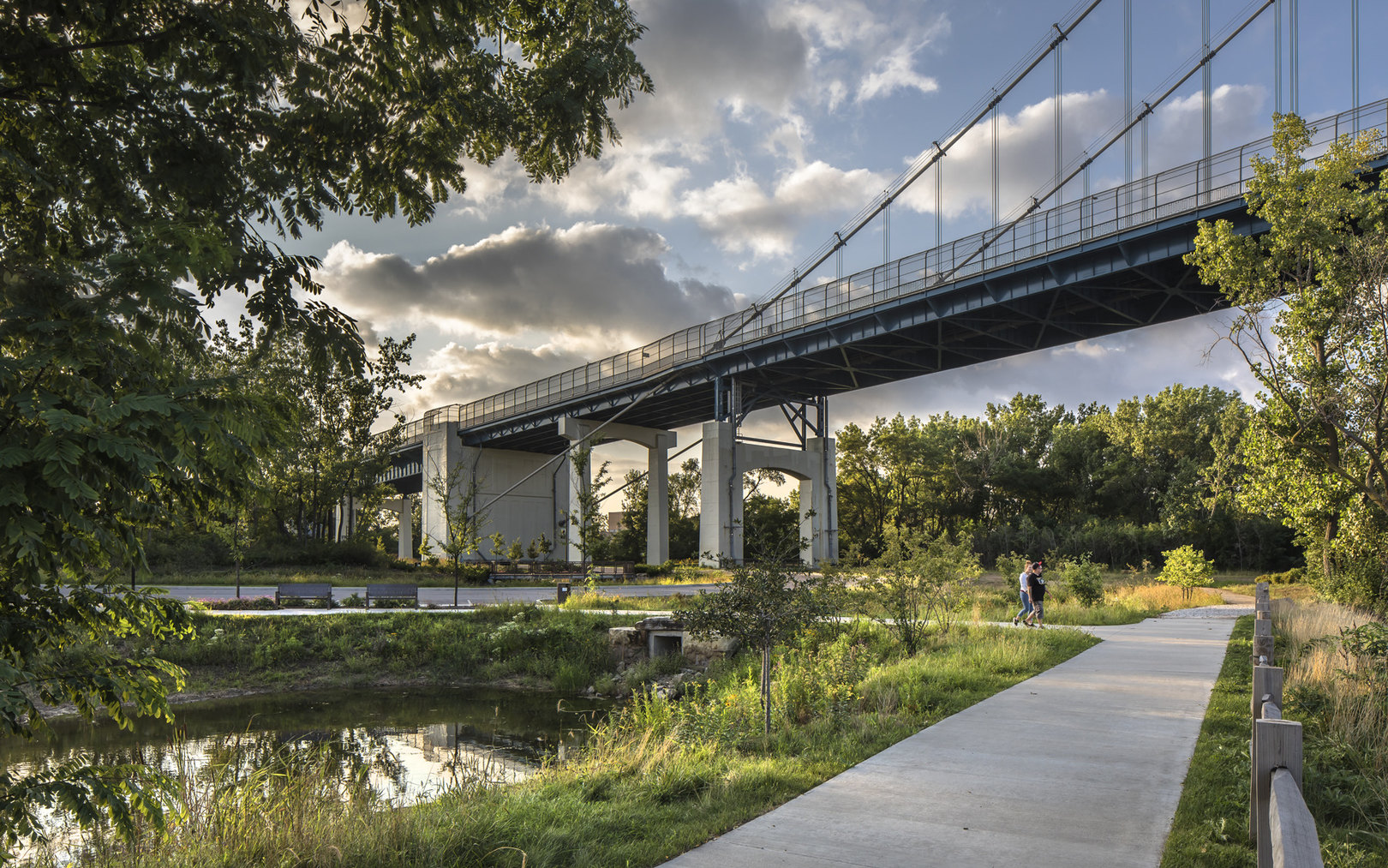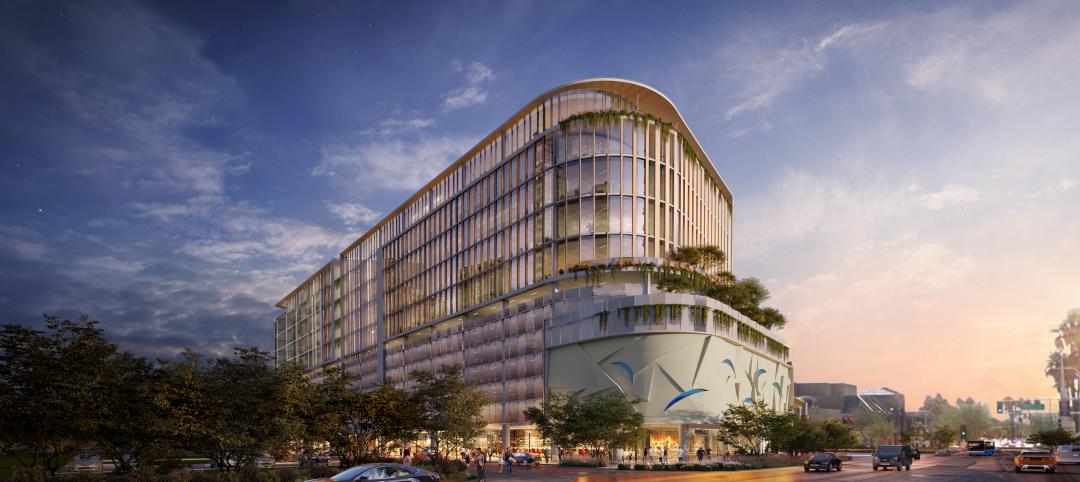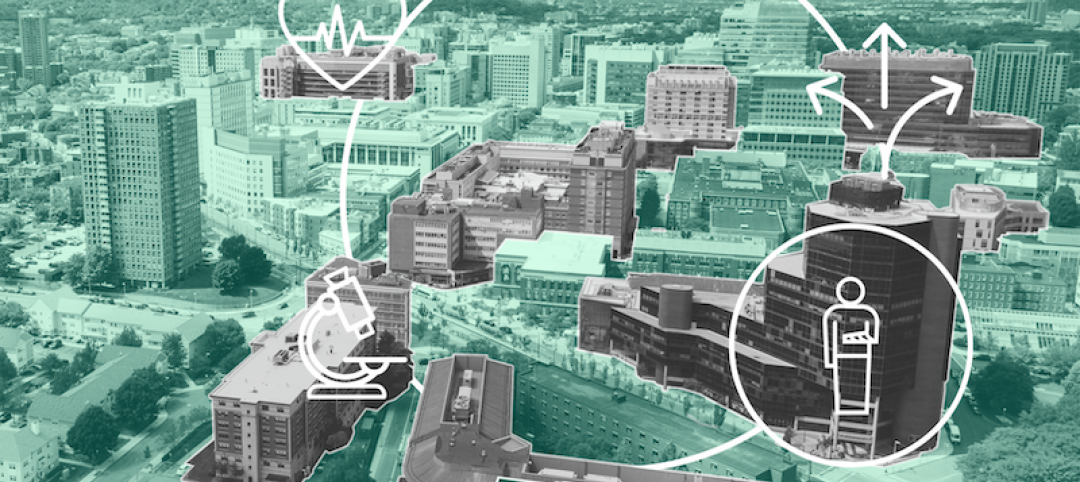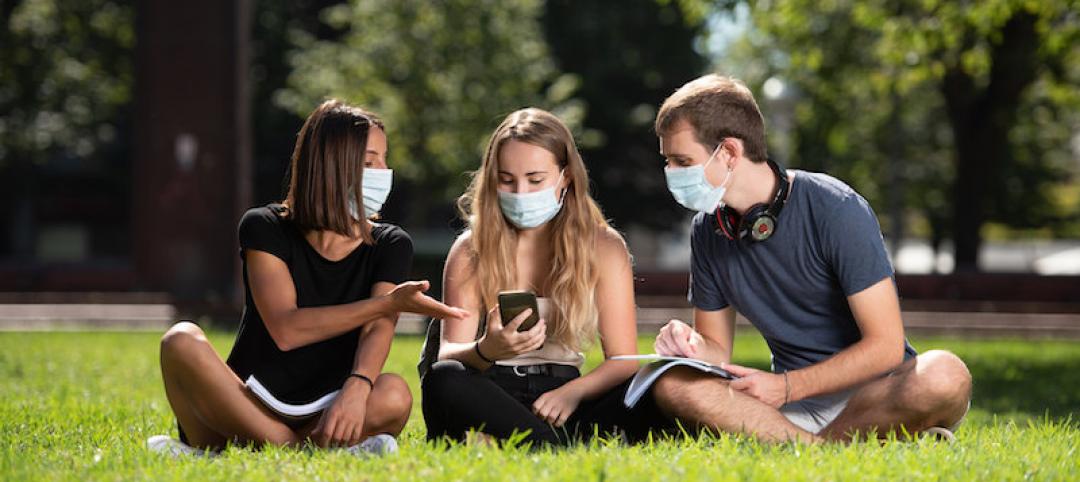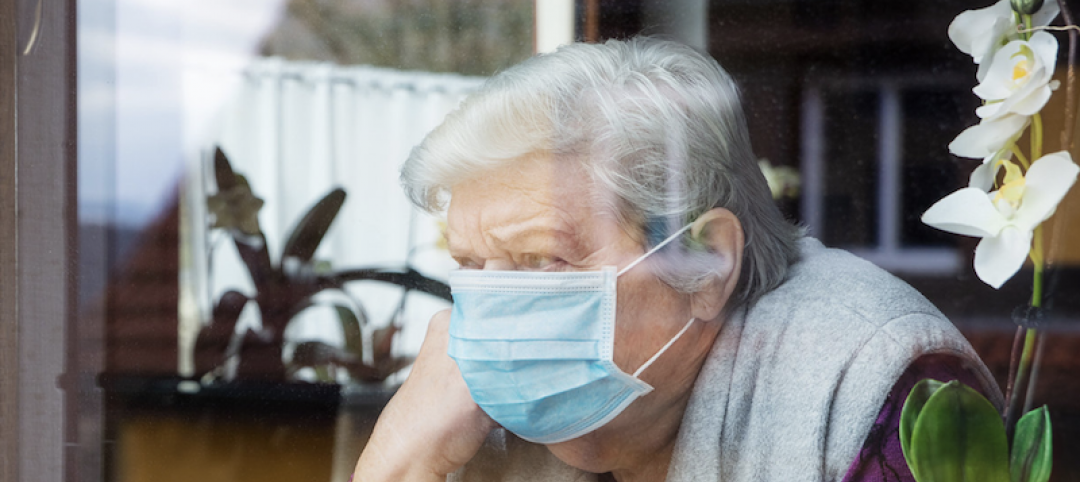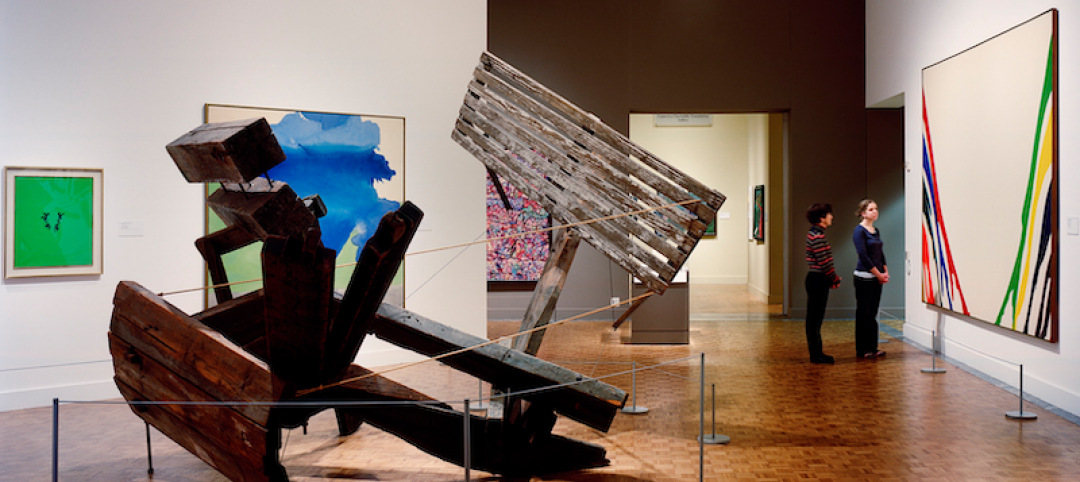Disease prevention has had a large impact on public space planning and design throughout history. Typhoid, smallpox and cholera epidemics in the 1800s brought forth the sanitary movement creating municipal sewer systems, indoor plumbing and wider, straighter streets that changed the way much of the world lives. The iconic, tree-lined allees of Paris and New York’s Central Park both sought to bring sunlight and fresh air into the city to combat infectious disease.
Fredrick Law Olmsted, the designer of Central Park, lived through multiple epidemics, losing his first child to cholera and his brother to tuberculosis. During the Civil War, he served as general secretary of the United States Sanitary Commission. His knowledge of infectious diseases and the healing qualities of nature would guide his designs for major urban parks throughout the U.S., parks he deemed “the lungs of the city.” Olmsted’s design of Boston’s Emerald Necklace represents an early example of green infrastructure, creating an interconnected network of parks and trails designed to reintroduce tidal flows and flush out stagnant, polluted marshes.
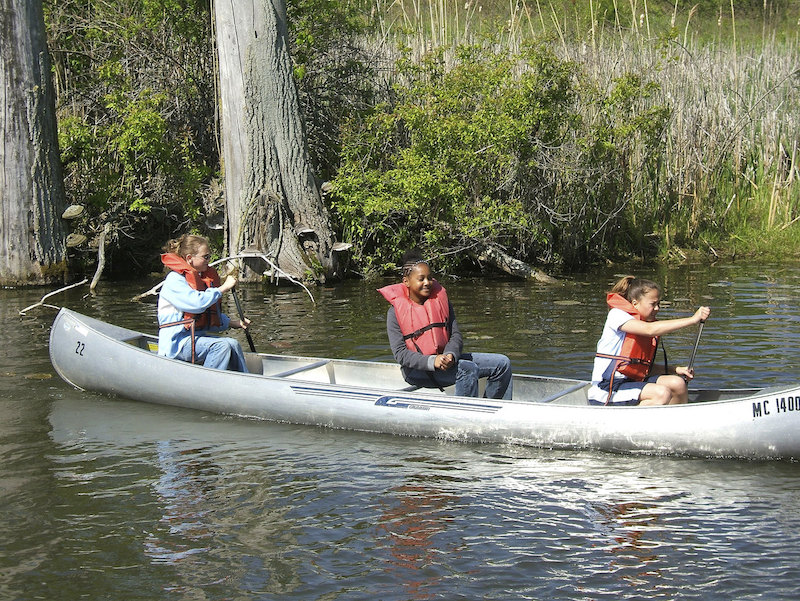
While we can’t accurately predict all the ways we will respond to the current COVID-19 pandemic, it should provide a moment of reflection as we see all too clearly the consequences of our exploitation and destruction of nature. In the same way that past epidemics spurred critical change--with designers seeking to restore nature and health in industrialized, polluted cities--it has become critically important that we re-evaluate our relationship with nature and the healing role that parks can and must play in restoring this connection.
Where we live and whether that location provides access to healthy food, clean water and air, nature, and outdoor recreation has a significant impact upon our overall health and well-being. This is reflected in the fact that we are seeing a disproportionate number of COVID-19 related cases and deaths in underserved communities and communities of color in the U.S. At the same time, we’re dealing with a longer-term national health crisis as 133 million Americans are living with diseases compounded by inadequate diet, poor living conditions and limited opportunities for physical activity. People of color and those in low-income communities face higher rates of diabetes, obesity, stroke, heart disease and cancer -- all underlying conditions that have led to a greater severity of COVID-19 cases and deaths. Preventative healthcare and access to healthy food and outdoor recreation opportunities are more important than ever.
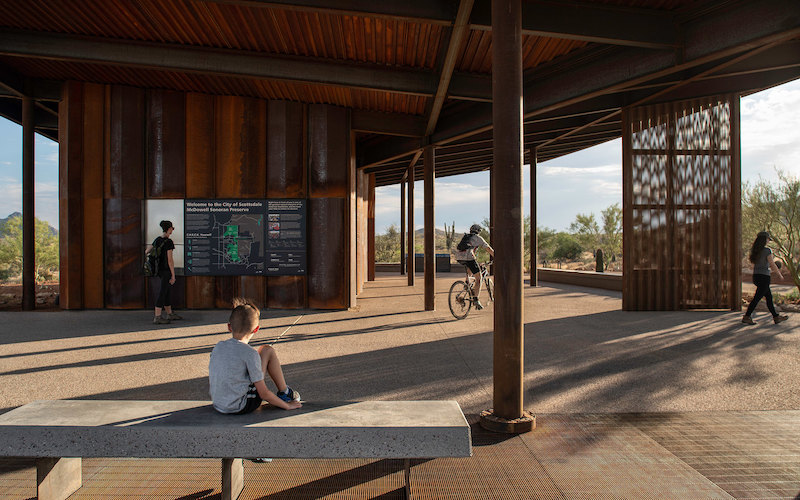
Revitalizing, expanding and incentivizing our public parks and trail systems creates essential arteries that help sustain the economic health of our communities. Neighborhood parks and enhanced pedestrian connectivity can also provide the infrastructure necessary to create positive public health impacts in all of our communities. Community recreational spaces can help combat diabetes, obesity, depression, ADD/ADHD and cardiovascular diseases. Restorative natural environments integrated into urban living can enhance mental health by providing refuge, respite and contemplation. Growing food locally and creating local food economies will be necessary for a sustainable future given food deserts in our cities and a destabilizing food system worldwide. It is predicted that 265 million people globally may face hunger by the end of the year due to the economic impact of COVID-19.
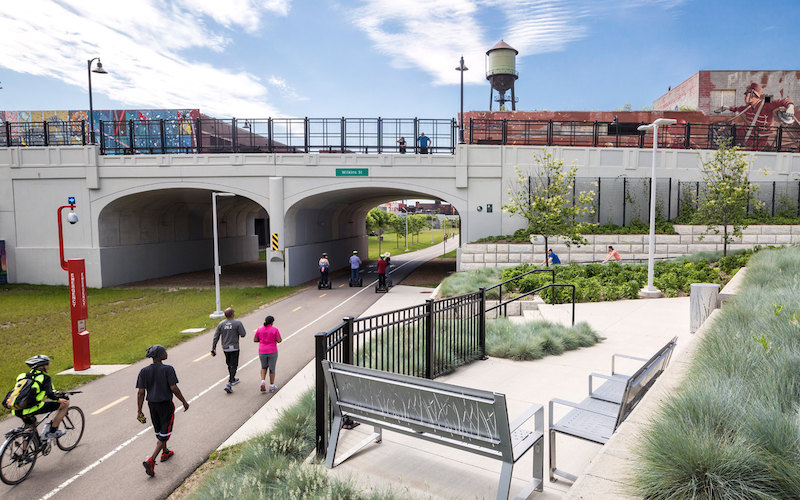
But rather than grand interventions that may not benefit the residents who need it most, these healing efforts may be better accomplished at the neighborhood scale as we seek to engage a greater diversity of voices to achieve positive change. As Jason Corburn, PHD, MCD at the University of California, Berkeley's School of Public Health states, many historical improvements were "pushing the poor away from the wealthy and providing to those who can pay first rather than those who needed it most." It’s often forgotten (or not mentioned) that Central Park and similar public health focused projects ended up displacing entire communities. As a profession, we must to do a better job of engaging, listening and responding to marginalized communities -- understanding that racial and economic injustice are interconnected with environmental degradation and the fight against climate change. Building healthier, more resilient and more equitable places to live needs to be a primary consideration for preventing and reducing future health crises.
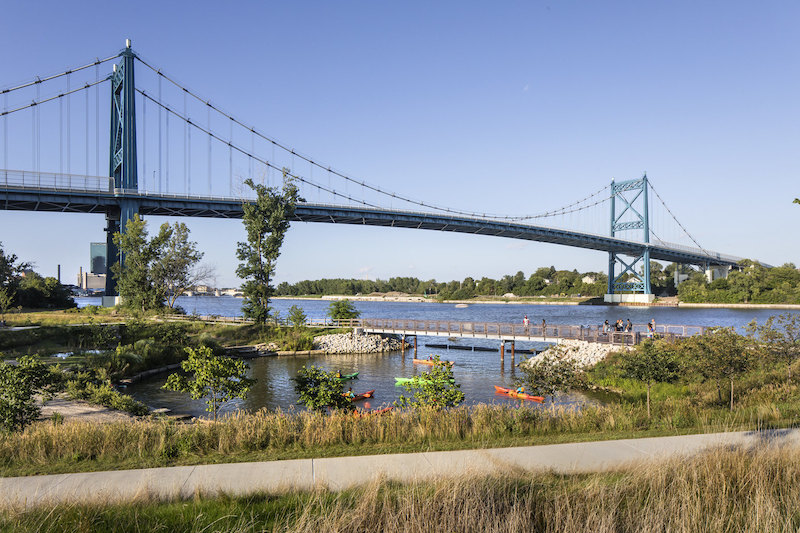
During the initial phase of the COVID-19 pandemic, our parks became highly valued assets. They have provided an opportunity for us to feel a sense of community while providing needed space for recreation and relaxation. Even with many park benches, playgrounds, sports courts and picnic tables roped off, overall park usage has increased. As we work to safely reopen our communities and businesses, it is essential to re-evaluate our connection to public space at the human scale and reassess the role that parks will play in sustaining our health both during and after the pandemic.
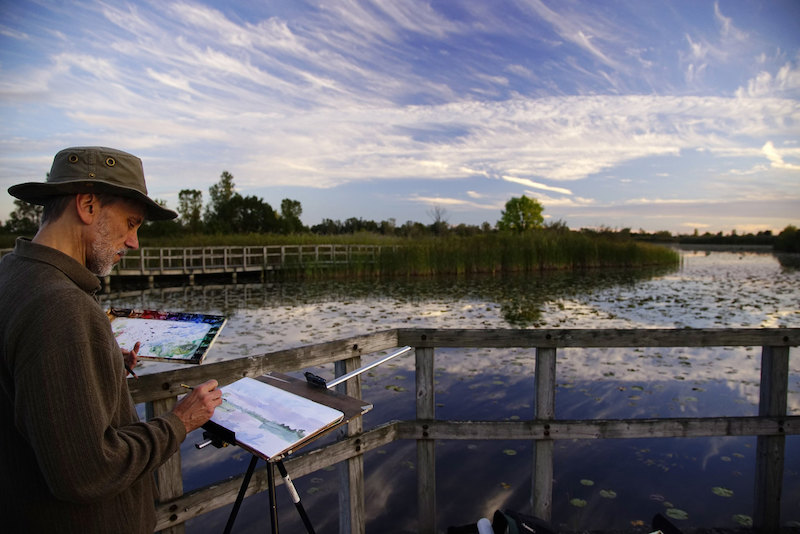
Rethinking our open spaces and parks as places to heal could lead to exciting solutions that take our cities down a more equitable and sustainable path. This approach may also allow for creative ideas and shared solutions toward more effective operations, maintenance and programming, fostering new public-private partnerships that will renew the relationship between our parks and public health.
More from Author
SmithGroup | Mar 28, 2023
Inclusive design requires relearning how we read space
Pulling from his experience during a campus design workshop, David Johnson, AIA, LEED AP, encourages architects to better understand how to design spaces that are inclusive for everyone.
SmithGroup | Feb 27, 2023
Surfing the Metaversity: The future of online learning?
SmithGroup's tour of the Metaversity gives us insight on bringing together physical and virtual campuses to create a cohesive institution.
SmithGroup | Nov 28, 2022
Data centers are a hot market—don't waste the heat!
SmithGroup's Brian Rener shares a few ways to integrate data centers in mixed-use sites, utilizing waste heat to optimize the energy demands of the buildings.
SmithGroup | Aug 3, 2022
Designing learning environments to support the future of equitable health care
While the shortage of rural health care practitioners was a concern before the COVID-19 pandemic, the public health crisis has highlighted the importance of health equity in the United States and the desperate need for practitioners help meet the needs of patients in vulnerable rural communities.
SmithGroup | Aug 10, 2021
Retail reset: The future of shopping malls
Developers and design partners are coming together to reimagine how malls can create a new generation of mixed-use opportunities.
SmithGroup | May 17, 2021
Future pandemic preparedness at the medical district scale
The current COVID-19 pandemic highlights the concern that we will see more emergency events in the coming years.
SmithGroup | Jan 25, 2021
Amid pandemic, college students value on-campus experience
All the students we interviewed were glad that they returned to campus in one form or another.
SmithGroup | Jul 21, 2020
How design of senior living communities must change after COVID-19
The cost of maintaining high quality of care and high quality of life for senior living communities has increased up to 73% for senior living communities that remain free of COVID-19 and up to 103% for COVID-19 positive senior living communities.
SmithGroup | Jun 12, 2020
How will museums change after COVID-19
This new environment may herald innovative economic models and change the way we think about museum design.
SmithGroup | May 5, 2020
How will COVID-19 change the procurement of professional design services?
We can use this moment as a test-case to build greater flexibility into how we pursue, win and deliver capital projects, better preparing the industry to meet the next disruption.

